14 days in India
Plenty of time to process the sensory overload and calm our souls frazzled by the initial encounter with this vibrant country. I was just going to type that things have eased out somewhat when I was jolted by an immense explosion right under our windows. The kids screamed “Fireworks! Fireworks!”, where as I yelled “Don’t go outside!”, scared that the boom is everything else but fireworks. The explosion was not followed by others and brilliant colors didn’t grace the dark sky. The kids’ faces drooped with disappointed and I gave up on my statement that we have gotten somewhat accustomed to India.
When presented with an encounter so different from anything one has ever experienced, willingly or subconsciously, the first reaction usually is to slap familiar labels on what appears strange. This endeavor to classify all that comes our way doesn’t have to be colored by the stigma of our judgment, but it most often ends up skewed by our limited vision and our cultural upbringing. I admit, we quickly labeled India the moment we laid our eyes on her, smelled her and heard the cacophony of her road honks. The old sages warn against judging a book by the cover, but we couldn’t help ourselves. We stated that first day on Indian soil that the country is dirty, terribly chaotic and … smells bad.
Since then we had two weeks to sleep on our labels.
In the span of fourteen days we moved on leaving Varanasi for Agra, the city of the famous Taj Mahal. Yes, I was thrilled to see the marble wonder of a tomb, but in Agra I also felt nostalgia for Varanasi, the city I labeled with no hesitation the poop/pee/trash/ winner of our journey so far. Having the distance to re-assess I realized that I actually really liked the intimacy of Varanasi’s little alleys, no matter how dirty some of them were. I also loved the expanse of space I felt from our perch of a terrace while observing life unfolding bellow – boys flying kites, pilgrims bathing and worshiping, families strolling, children playing. The little vignettes of the city, the richness of the human interactions, the worship ceremonies and the rituals of death, life and marriage – they were part of the daily routines of this this Holy city. True, everything we saw and experienced was raw, unedited. The human condition in its most vulnerable form was on display. Beautiful or normal, in the sense most us define these two words, do not apply to Varanasi, as the city has its own aesthetics and dances to its unique rhythms. To our eyes Varanasi might appear ugly, unrefined and covered with grime, but it is what it is and labels are not needed. The city speaks about itself loud and clear and we were fortunate to be able to get a glimpse of its life.
From Agra we arrived in Rajastan. This is where things really started falling into place. Rajastan is the closest I have ever been to an oriental dream. The landscape is dessert like, the vegetation sparse and elegant. Camels stroll leisurely on streets full with colorful merchandise. The light is bright and the dessert winds cool us better than air-conditioning. Days unfold slow and whole towns fall asleep during the hot siesta hours of the days: shop sellers nap, cows hang in the shadows, kids voices disappear and only the lemonade stands go strong. The vibe of Rajastan sits better with me than the gray palette of Varanasi and Agra. Moreover, the cities here are cleaner, chill and we are making friends easy. We are even back to eating street food!
Here is an an abridged version of what made an impression on us during those two weeks.
India’s architecture makes me drool in awe and feel tiny
The architectural heritage of India is stunning, the scale of its monuments impressive and the beauty of the detailing mesmerizing. Agra’s monuments were all about white marble and red sandstone, graceful arches, fine marble lettuce walls and screens and artful decorations inlaid with semi precious stones. Architecture here is truly a synthesis of all art forms!
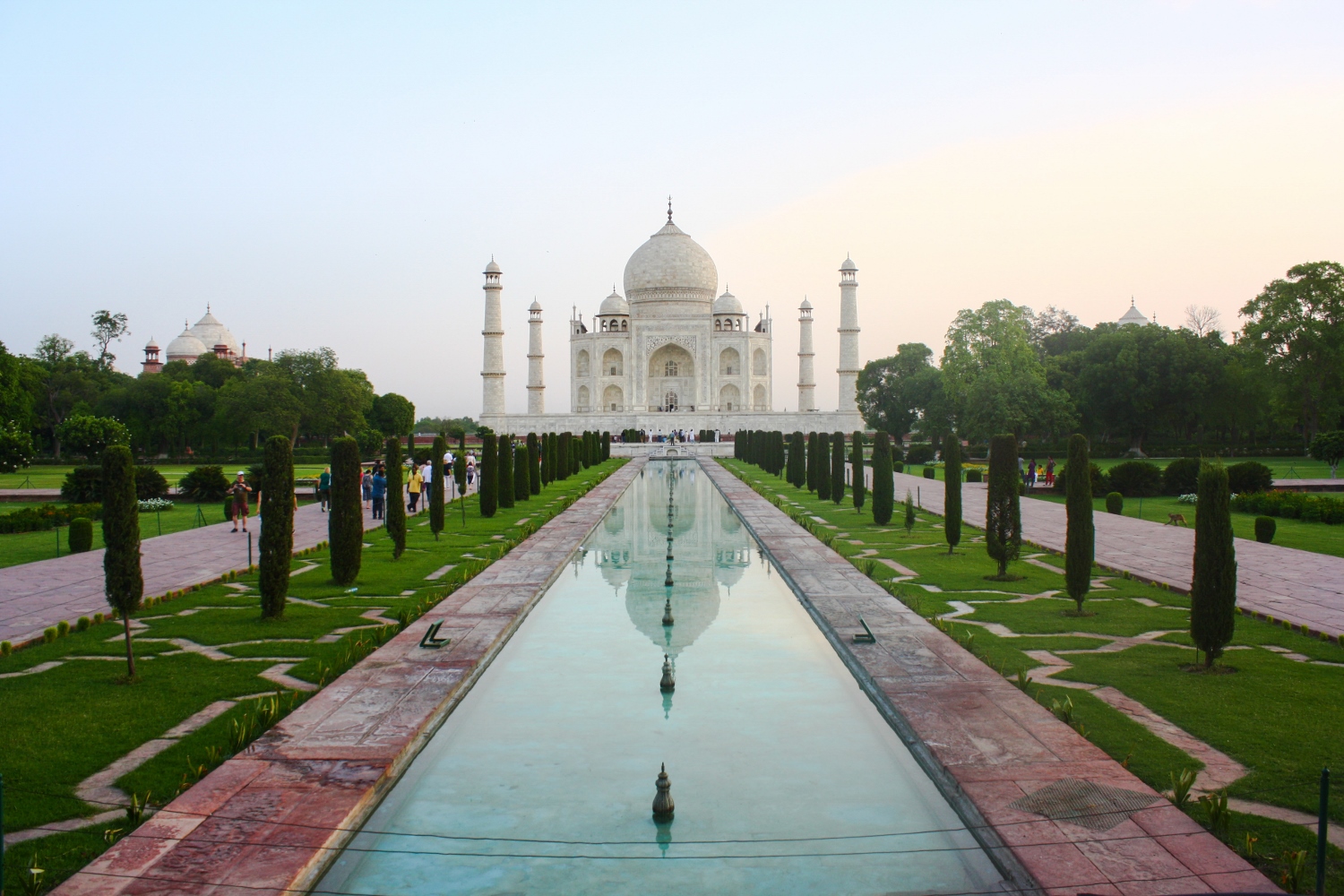
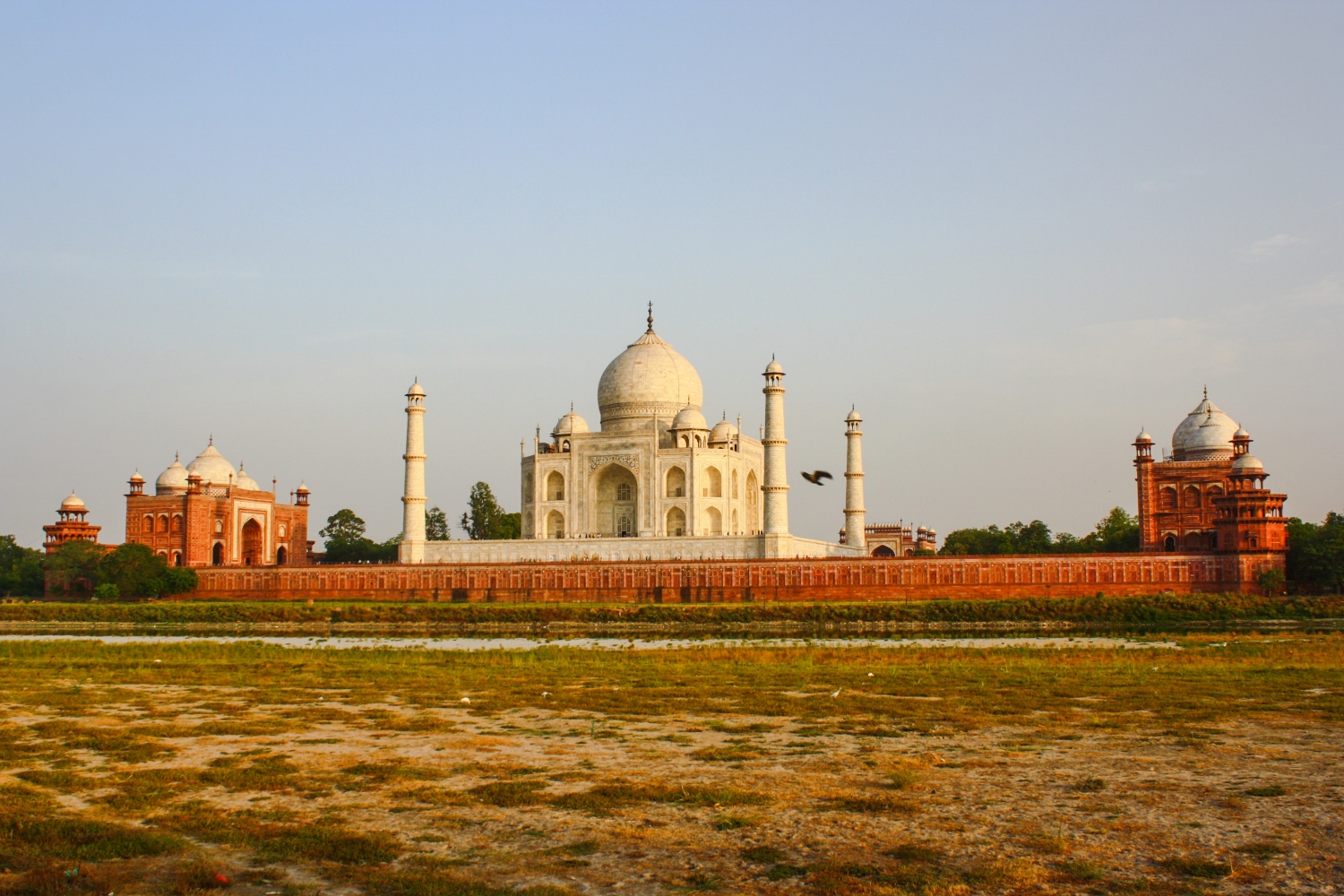
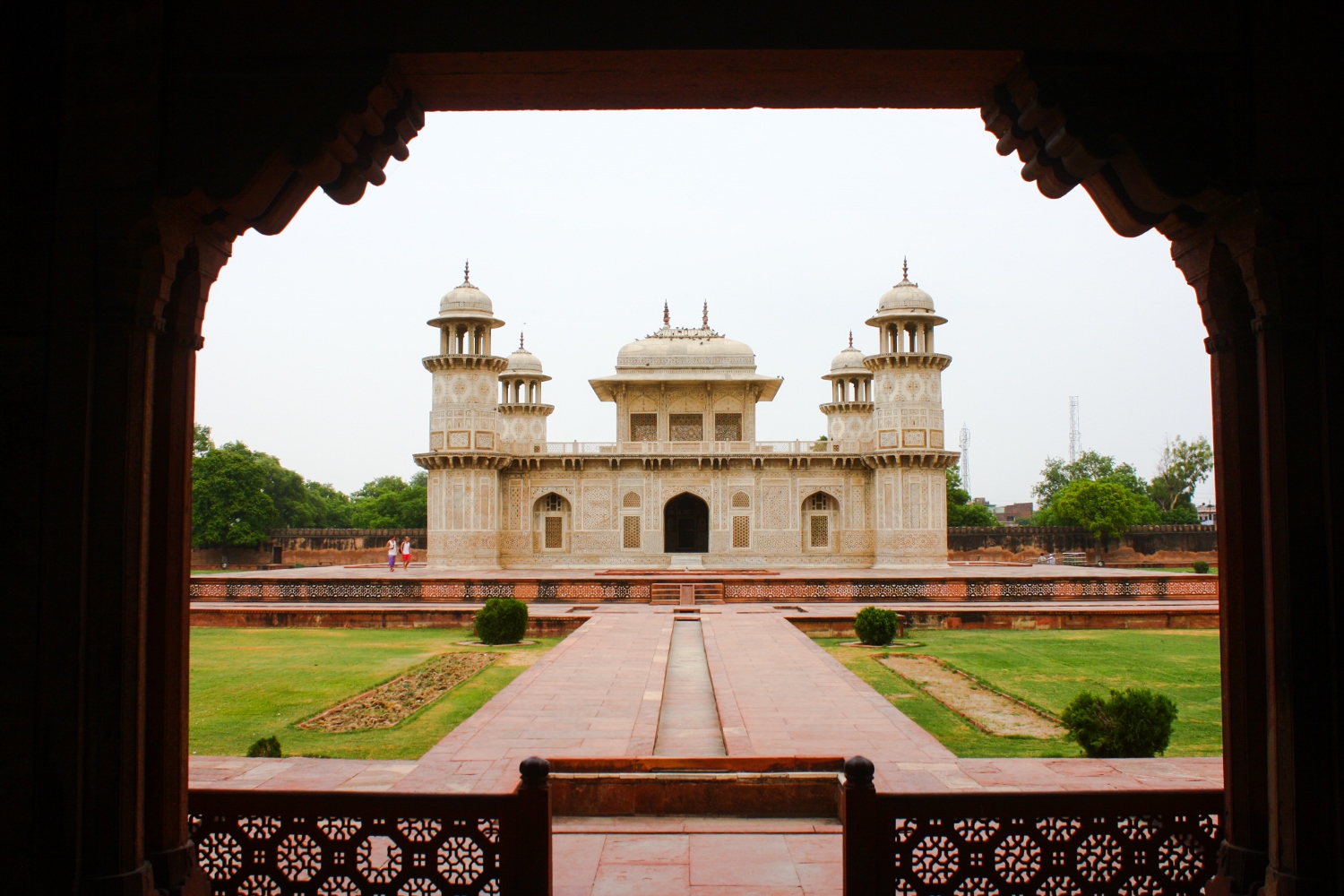
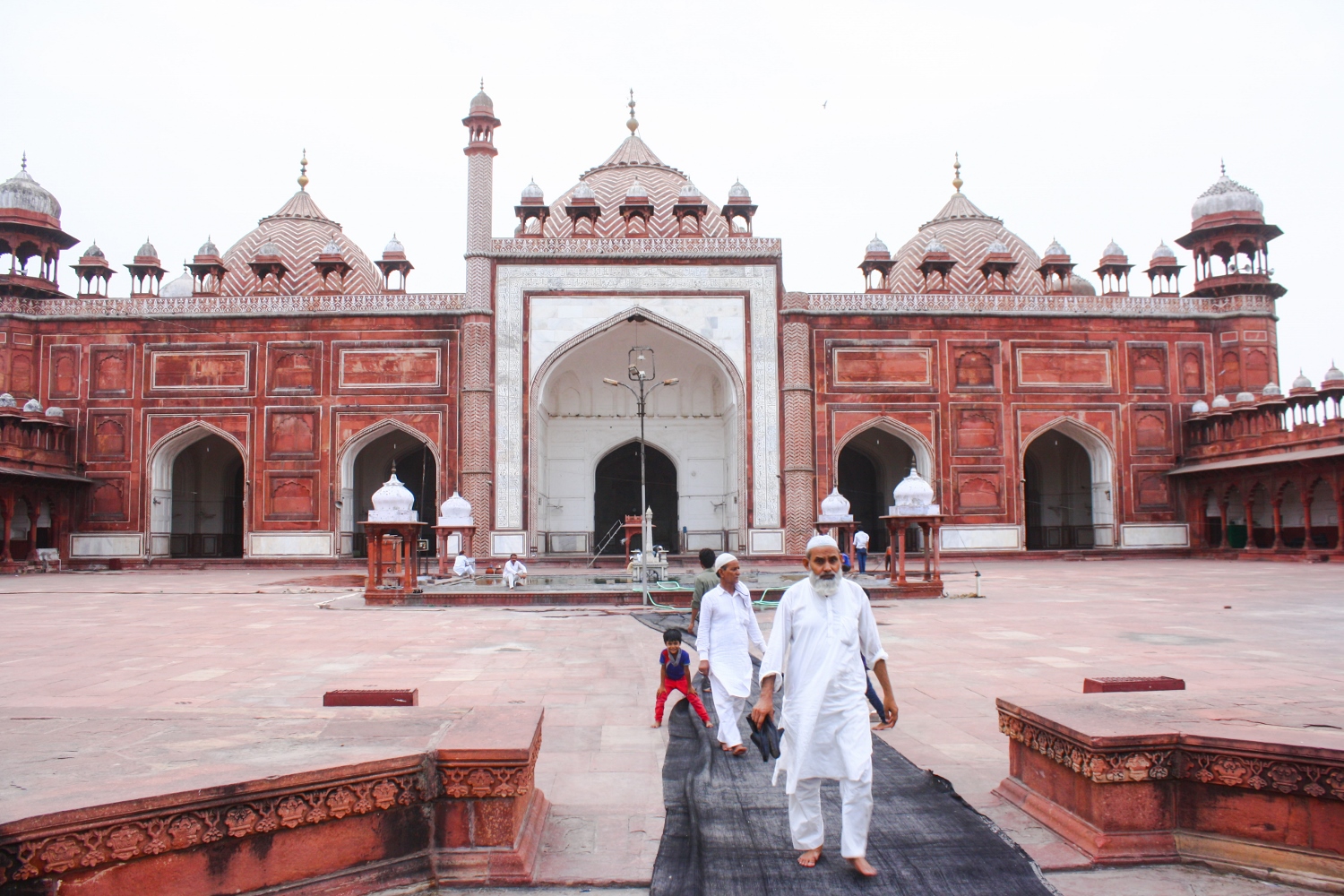
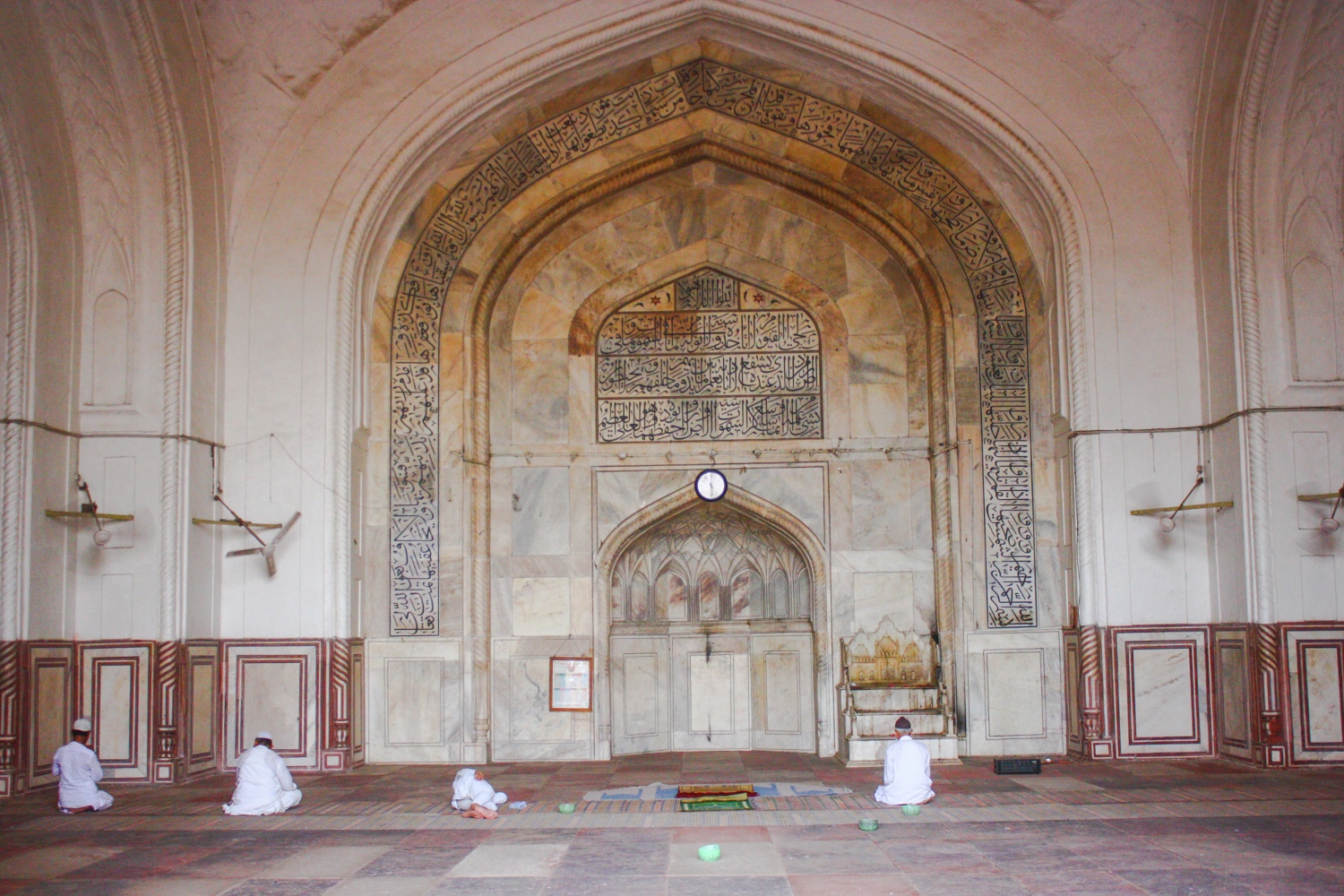
Taj Mahal might be the most famous architectural monument of India, but I personally prefer the castles and forts of Rajastan with their warm ochre stones complementing the landscape around, colorful detailing and playful decorations.
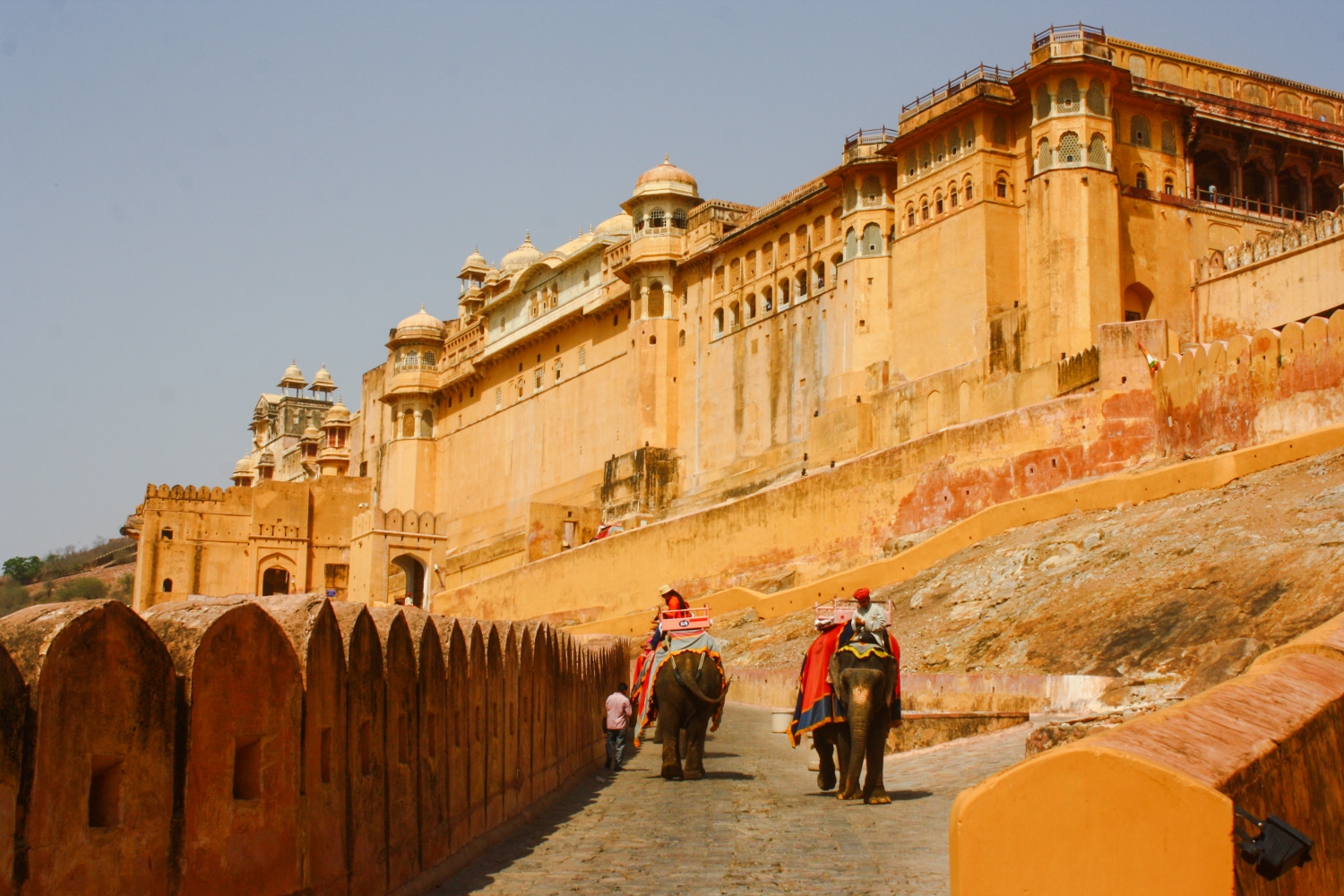
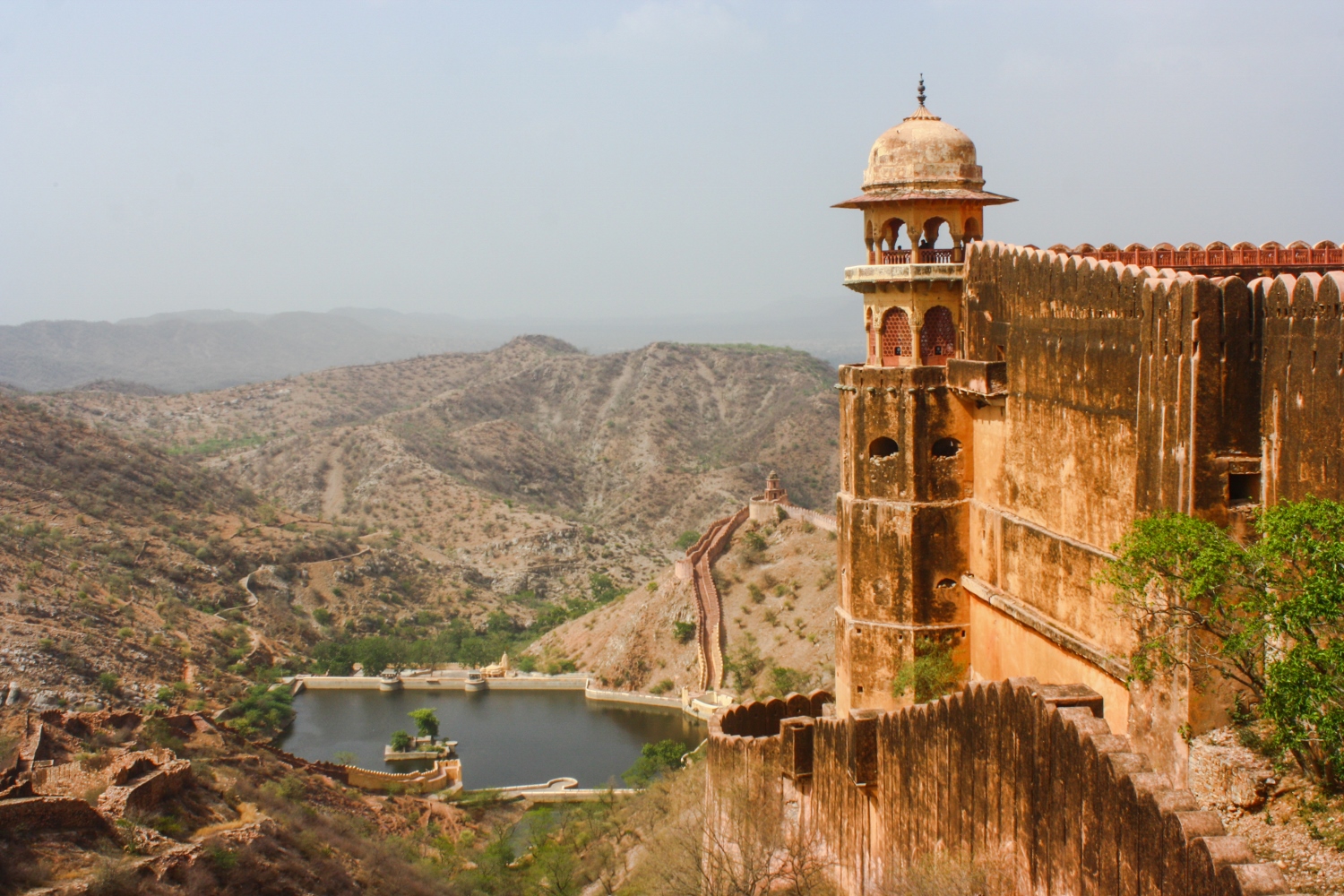
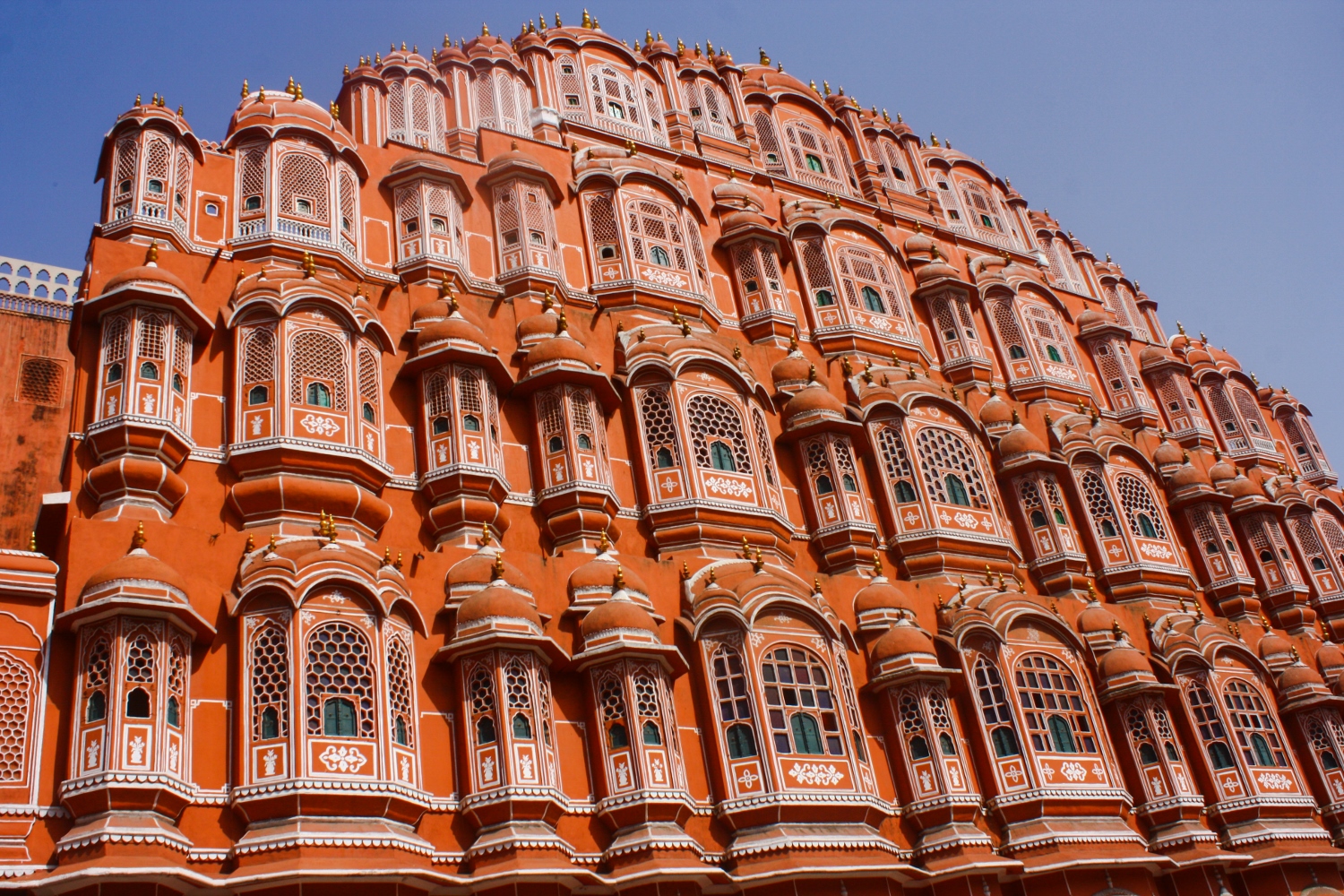
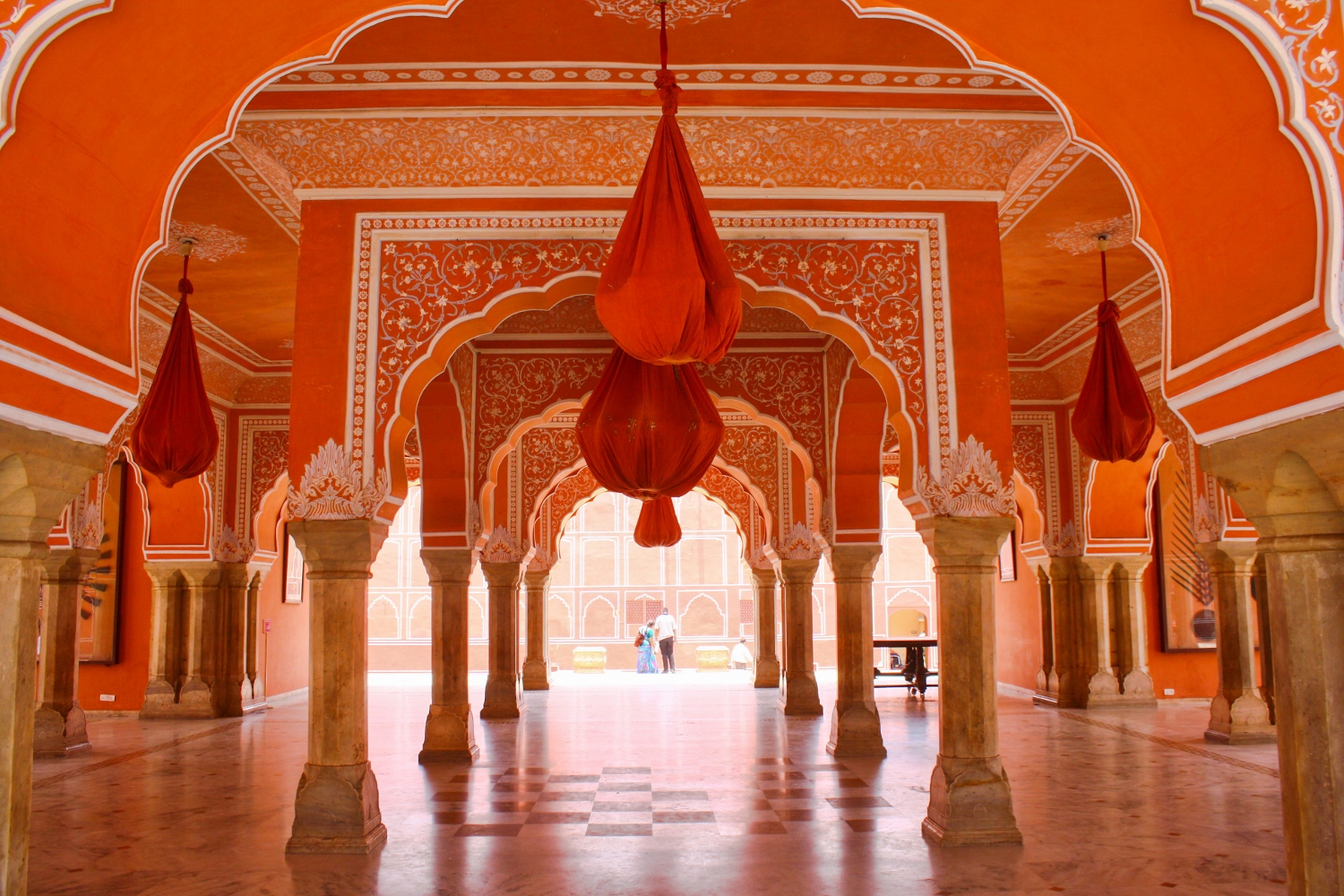
Delicious Vegetarian Food. Enough said.
Nagara Drums
Nagaras have been played in Northern India for centuries to prepare warriors for battles. Adapted over the years as a source of entertainment they once were used to send messages of joy and emergency. In the Rajastan of today, there is no party without their fast beat. We heard the drumming during a puja ceremony by the lake on our first night in Pushkar. The next day we showed up for a lesson, loved it and practiced for a week. Our teacher Narendra was very patient:)
The Amazing Colorful Turbans, Saris and great MUSTACHES!
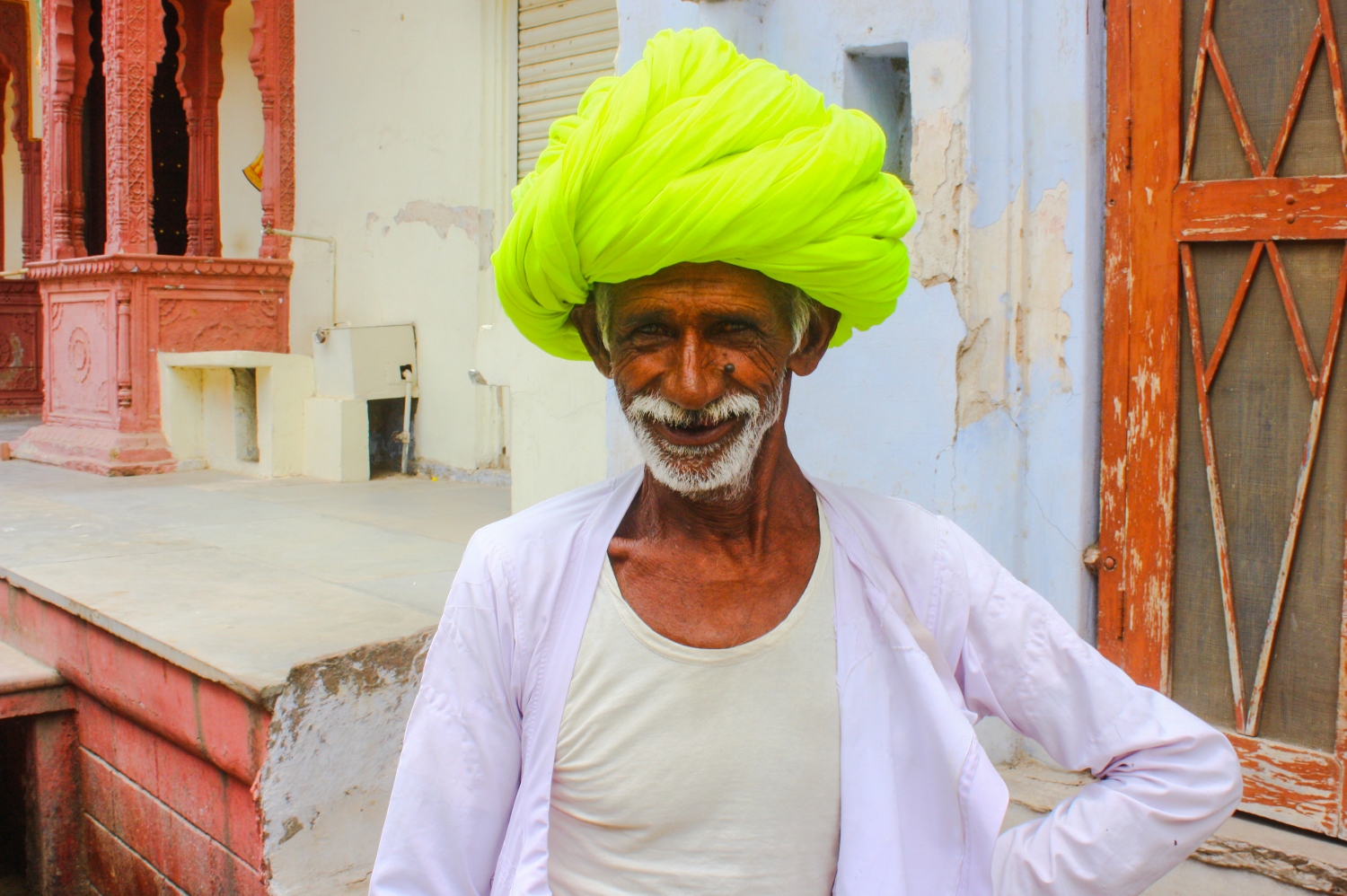
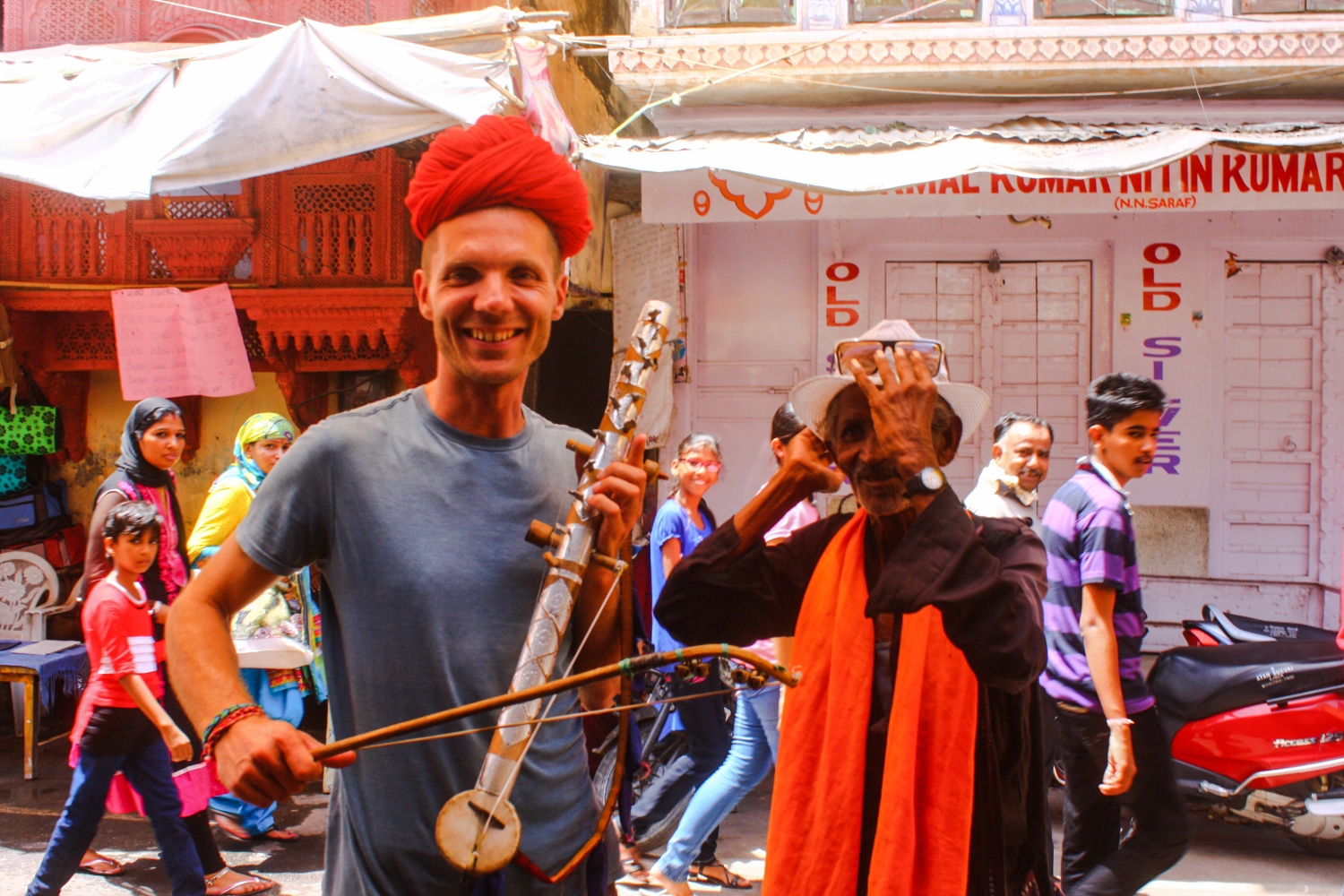
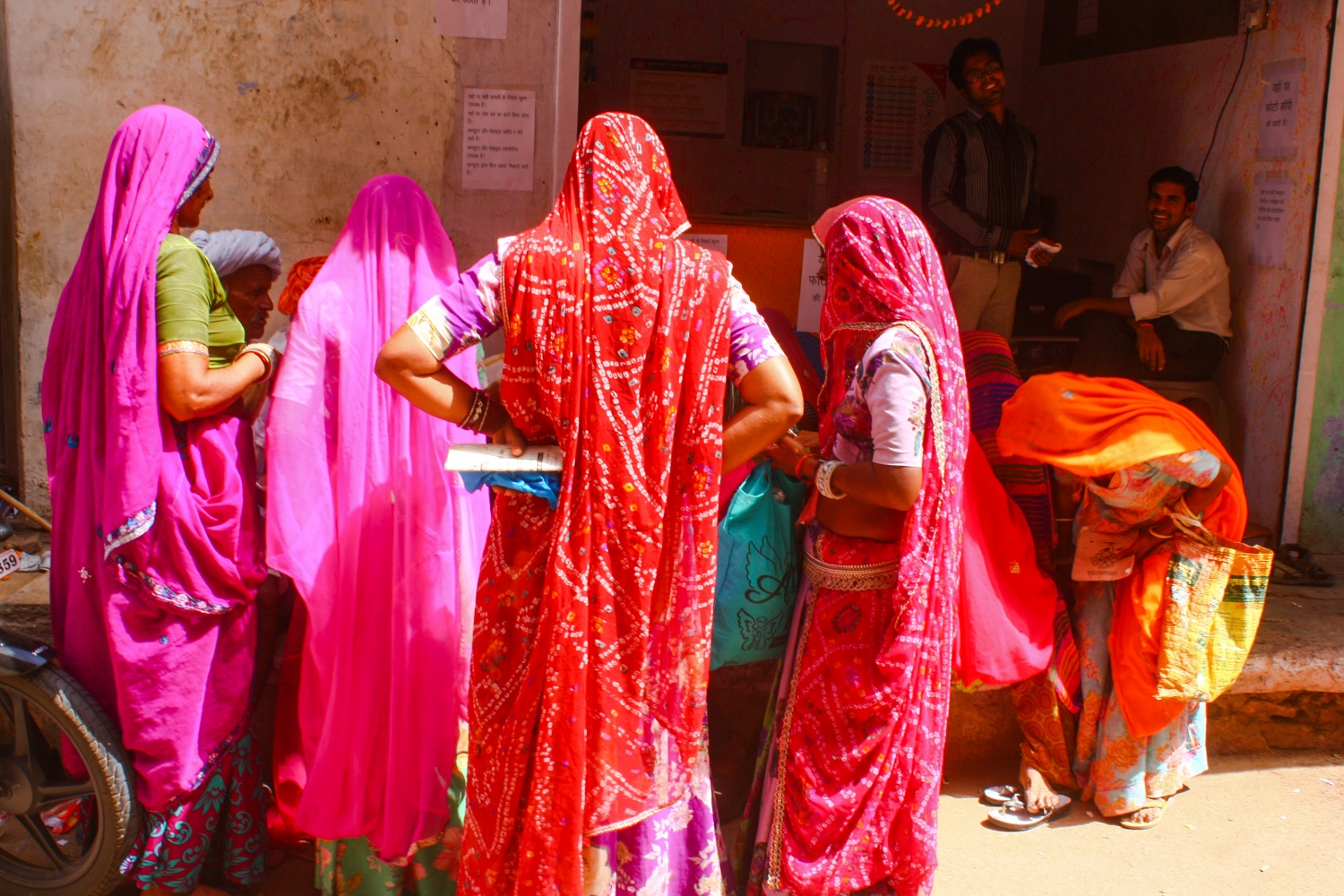
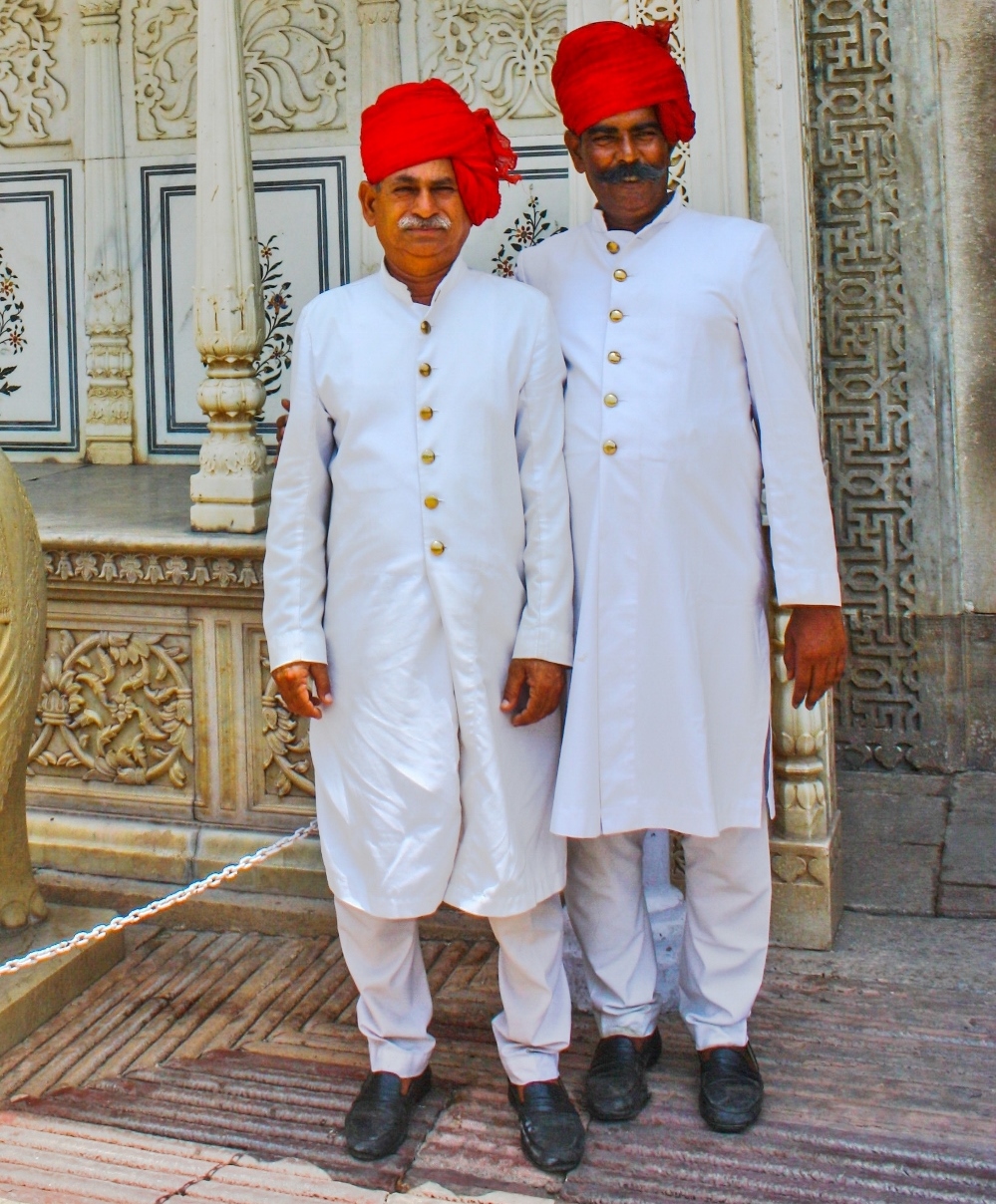
Henna Art
Inspired by the amazing handiwork of the lady who henna-ed her hand (see above), Raina bought a henna tube and decorated my hand and arm. Well, it turned out we grabbed the wrong henna tube from the store and the final result was blood red when it dried. Now I am getting extra attention (as if I needed more). People stare at my hand pitifully and murmur: “Who did this one? No good”. I shrug and pray it will wash off soon. When done right though, mehndi can be divine.
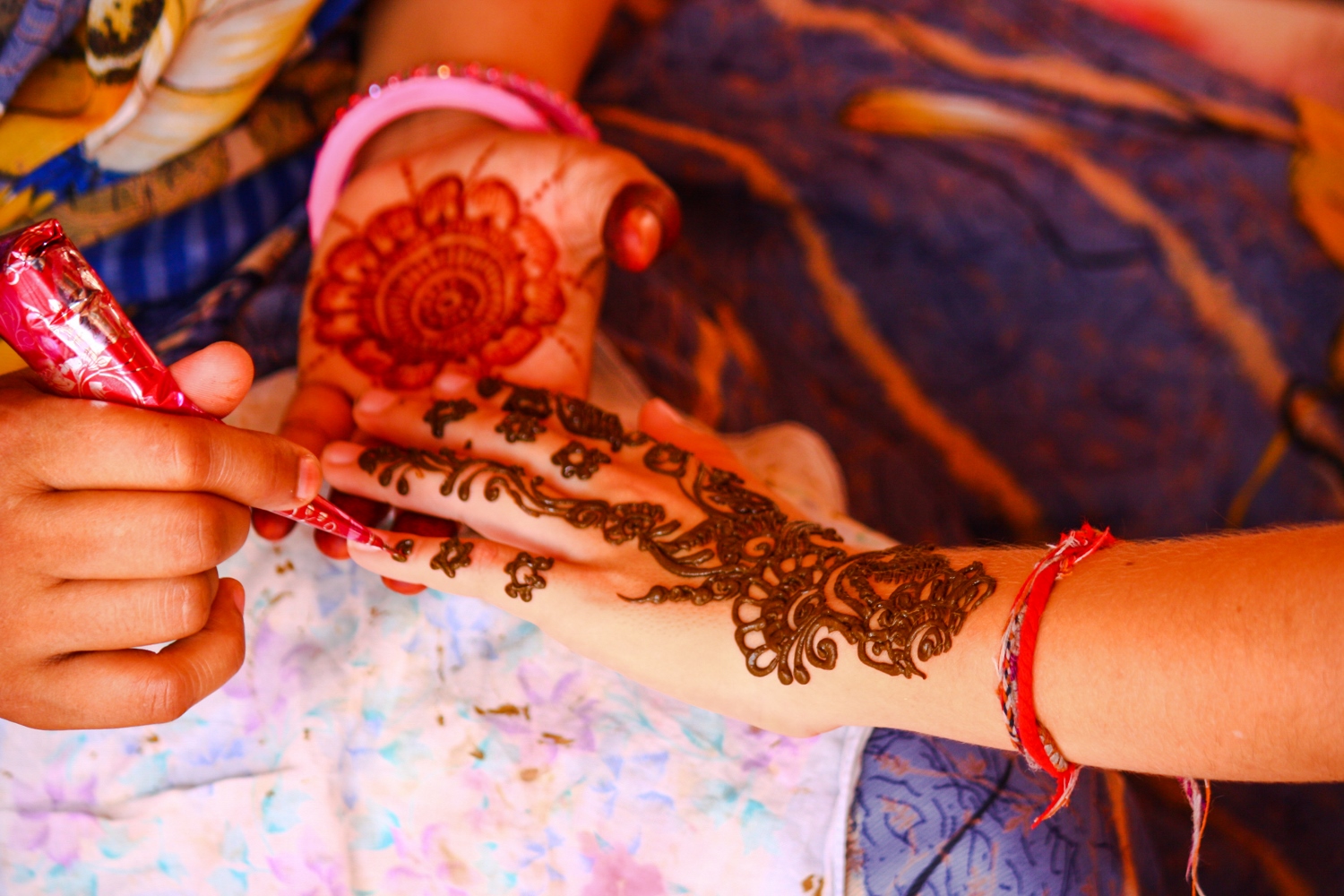
Bangles. Any color and level of shine!
- Chai! My new favorite drink, sold in tiny little cups.
This was the beautiful, tasty, colorful and unique. Now the bad.
The train stations
If you read our previous post you know that the train station in Gorakhpur was one of our biggest initial shocks. Besides the dirt we saw people sleeping in the middle of waiting areas in random patterns. They didn’t seem to be waiting for a train as they were visibly in deep sleep. Their bodies were fully relaxed and they had no bags in sight. Now I realize that they were spending the night there, using the crowded areas as “sidewalk hotels”. To my horror during the day the inhabitants of the sidewalk hotels are strolling on the train tracks, collecting trash, hanging out or taking a shower using the water pipes supposed to feed the trains before departure. As a mom I am on a full alert for the safety of these children. Instinctively I want to scoop them away from the zone of danger. So far this is the hardest challenge India has thrown my way: observing children weaving through mad traffic, swimming in dirty rivers or hanging on me with big eyes begging for a chocolate or chapati…
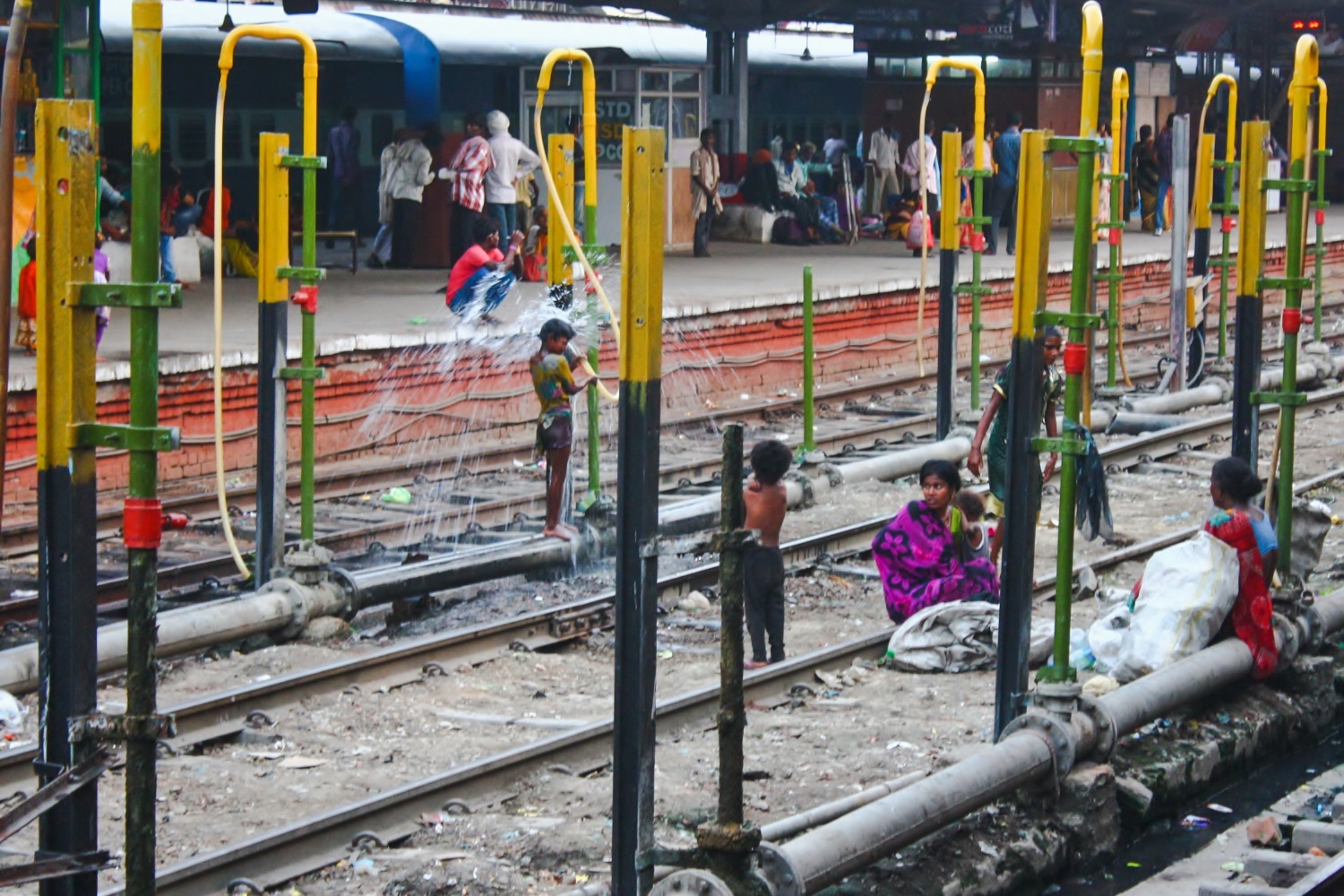
The pee, The poop and The smells
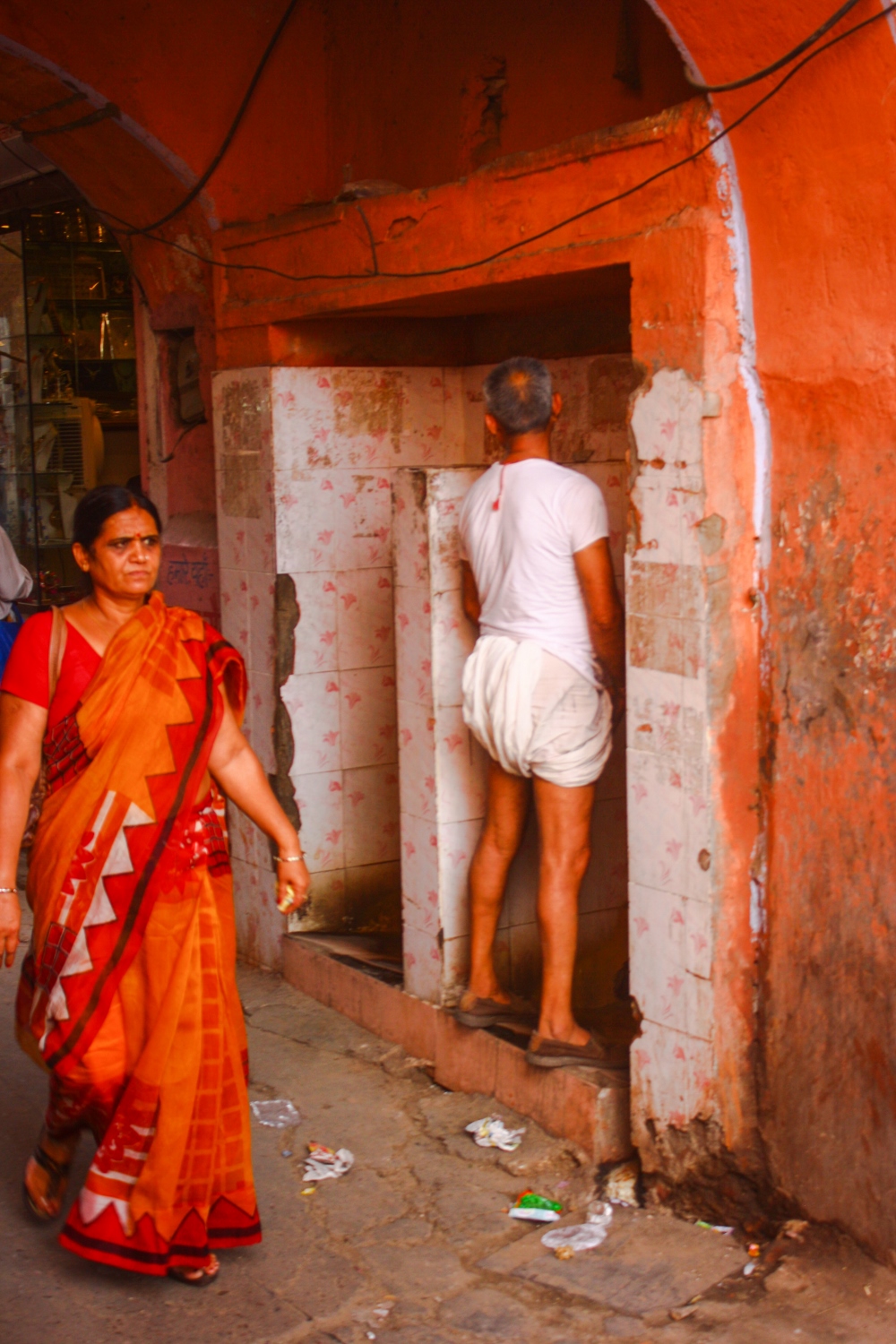
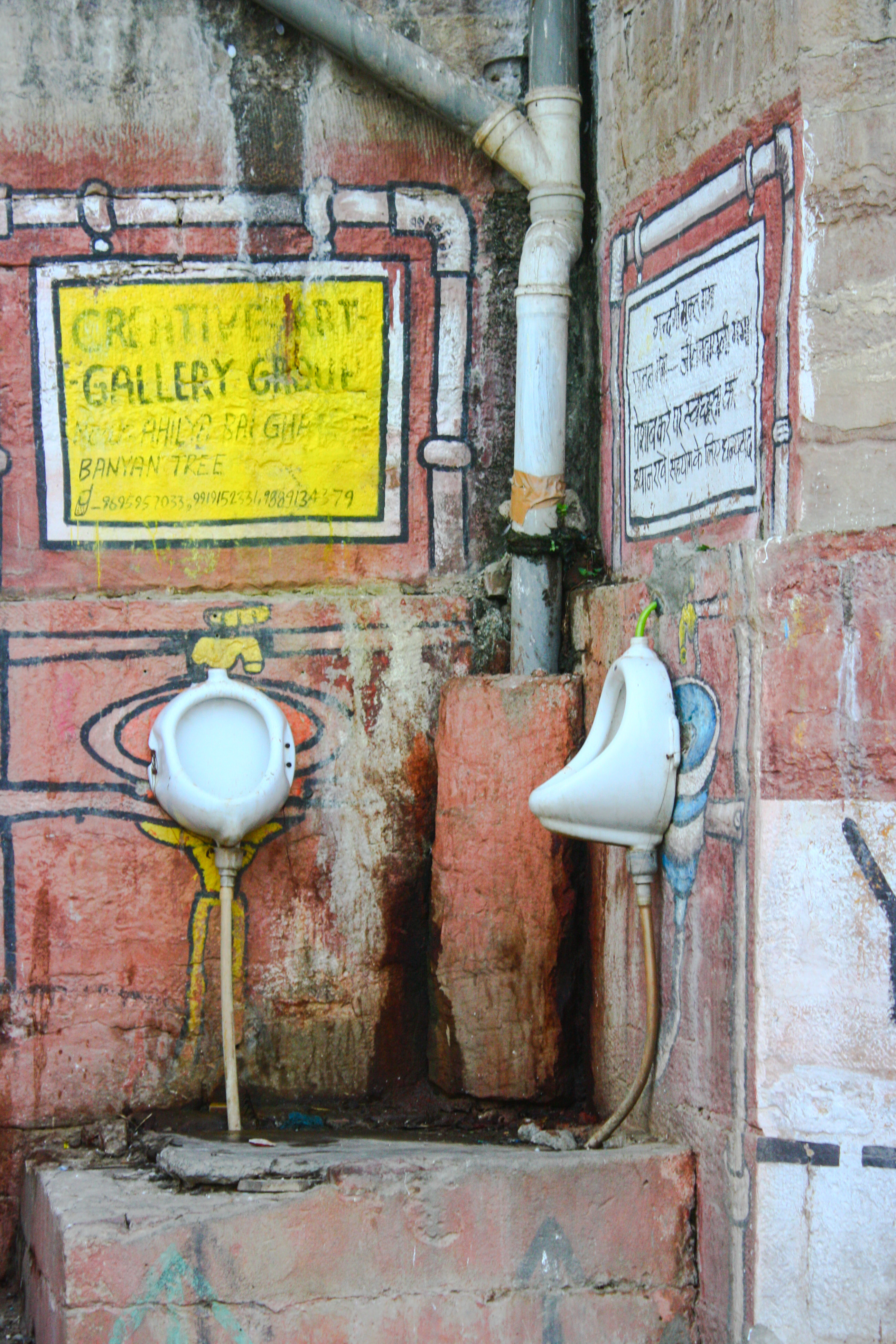
Big thanks for all that goes to the Holy Cows that roam the cities, the dogs, the monkeys and I think last but not least, to men. Wherever I turn around I see men urinating! If I am lucky they will be using the “special” urinating walls. If not, they will be anywhere, literally. Sadly, I have seen men do the heavy, to use a Vietnamese expression. Many times. Yes, I agree, the excuse is that there are no public bathrooms, but still it is hard to stomach.
The Traffic
It is crazy chaotic. Forget about my fascinations with the millions of motorcycles of Ho Chi Min City. Vietnam’s traffic is like a well orchestrated performance of kind drivers. In comparison India’s traffic is pure madness. And the honking is constant. It creates the illusion that all the drivers are blind and half dead and the only way to navigate a vehicle safely is by using piercing non- stop honks. Add to that the loud sounds of music, the bumps on the road, the near head on collisions, the dust and the stares from everyone we pass on the road and you are on a rickshaw in India. Most drivers will turn around and attempt to start a conversation while speeding through the messy traffic. It is flat out scary.
After days of observation we noticed that there are invisible rules that govern the mess on the road. Pedestrians are lowest caste on the road. Period. No one will stop or slow down even if you have children in toll. Next on the scale of importance is the bicyclist, followed by the bicycle rickshaw, the motor rickshaw, the car and the bus. There is only one thing that can make the bus stop. Not loading and unloading of pedestrians. This is done in slow motion (if you are lucky). The absolute king on the road is the The Holy Cow.
The Holy Cow
The holy cows are another enigma I am trying to solve. There are so many of them in the streets of the cities! They all seem very content and happy, pooping left and right and sleeping in the middle of the road while people and vehicles pass them without a fuss. Today I saw a cow grab boxes of merchandise off a sellers’ stand and get away with a gentle pat on the back. I bet that if I grab a box and throw it on the ground I will get yelled at despite my revered foreigner status. Anyways, in a way the cows are treated like kings but they spend their days in a concrete jungle munching on trash. I have seen them lick the streets, eat garbage, food leftovers, plastic bags and cardboard boxes… Many get sick from the deadly diet and are as skinny as skeletons:(
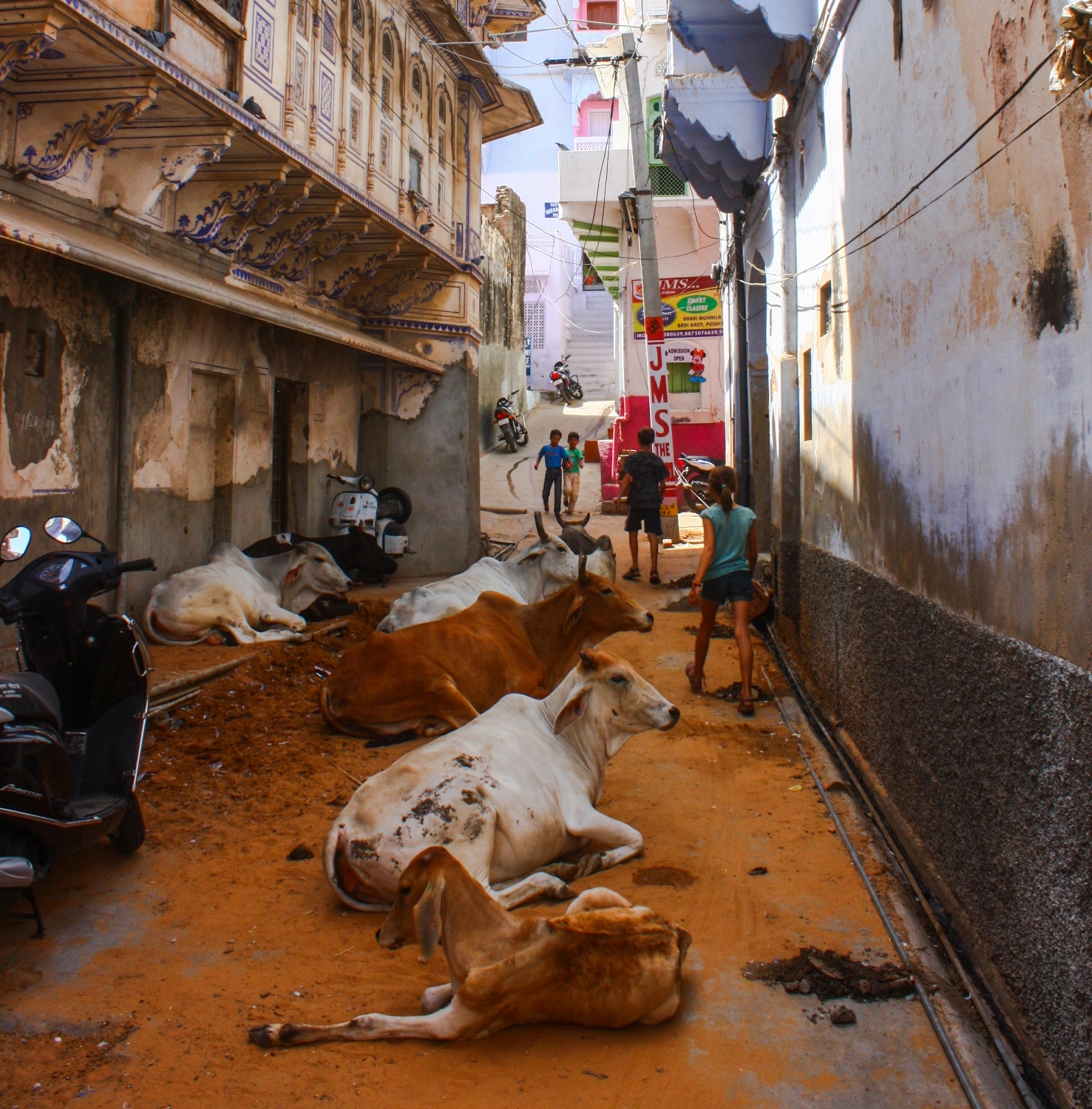
The Stares
No change in this department. We are being stared at anywhere we go. We are being taken photos of (fair exchange); we are being begged to be taken photos of; Boryan is being hugged too often for his taste. As for my part, I stopped wearing short pants and try not to return the stares but ignore them. The thing that eats us though is the constant question “Where are you from?” Two days ago our patience with this question run thin and we started snapping angrily. After a day of debating how to deal with the issue we decided to just answer and move on, rather than put a fight. So we are officially from Bulgaria and Poland (if Kuba has energy to add that). The kids speak perfect English because we are smart and no, Budapest is not our beautiful capital. There!
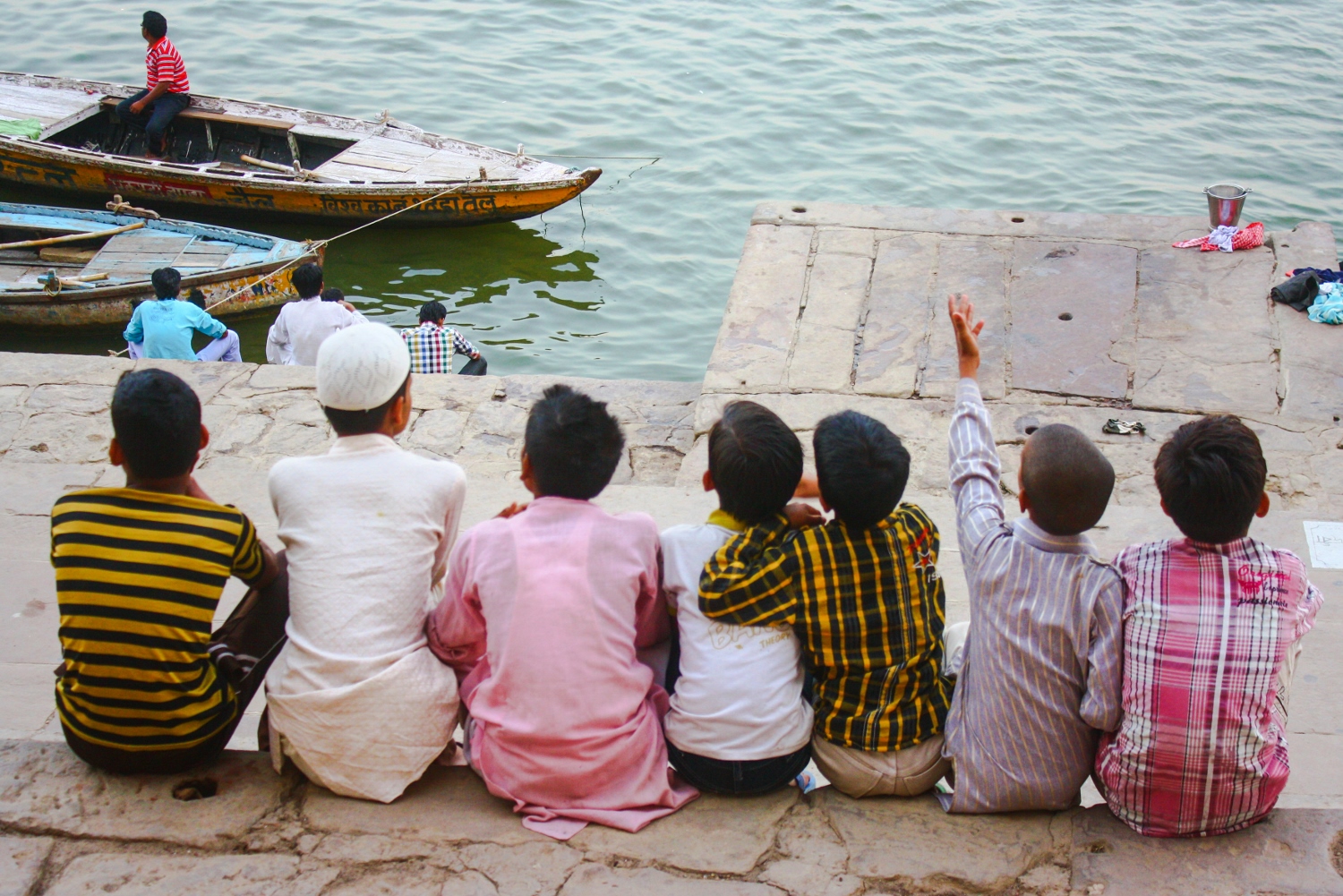
Beauty resides right besides all the ugliness here. In this land of extreme contrasts, poverty and despair one can witness lots of warmth and affection. My favorite photo so far is the one below. It speaks volumes about life in India. There is no personal space here. See how the boys are snuggled together even though there is plenty of room to spread? Display of affection between friends is very common, especially between men and boys. Moments of excitement and joy are ample and better enjoyed with friends or strangers. Moments of boredom are spent observing life go by, chewing tobacco, spitting, gossiping, playing cards. Moments of anger are spent venting in front of whoever is watching. Life is difficult and people are always on the lookout to make a living, to sell service or a piece of cloth, but amid all of life’s frenzy there is pure shanti (peace).
Time here flows as slow and steady as the Holy Ganga itself.
~M.

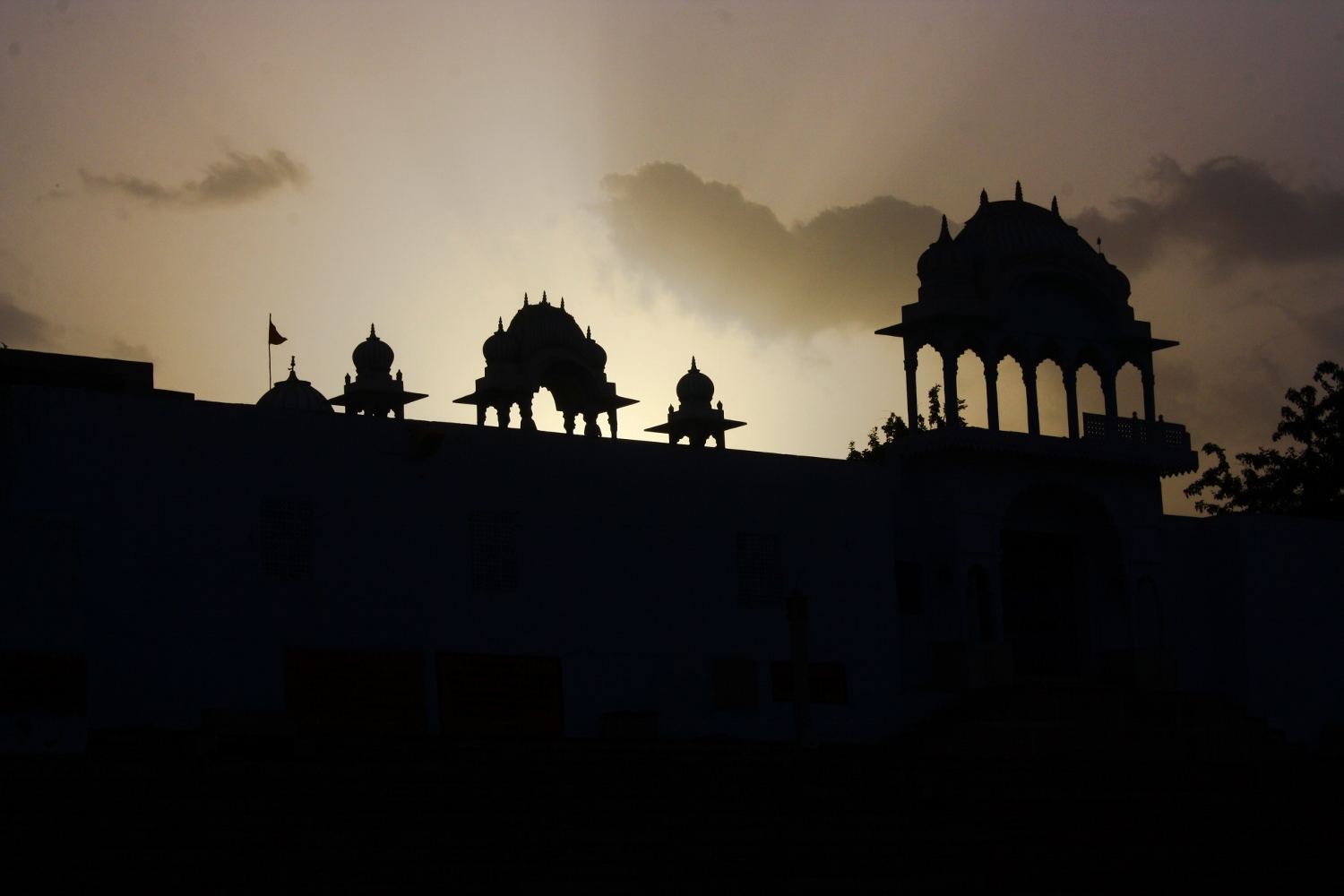
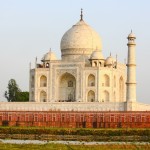
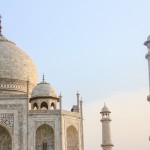
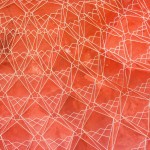
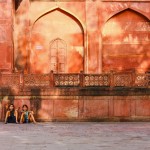
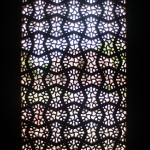
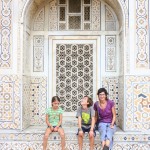
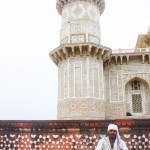
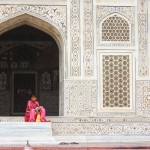
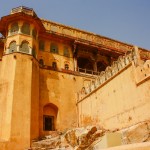
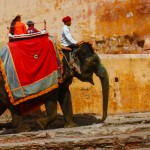
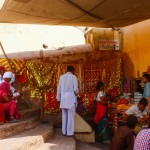
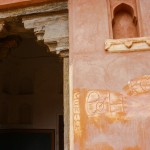
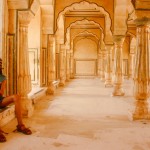
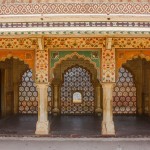
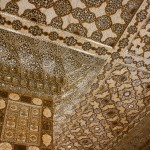
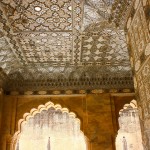
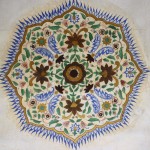
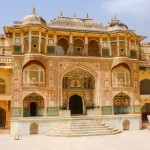
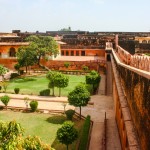
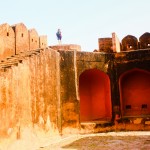
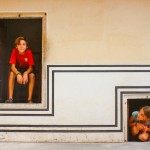
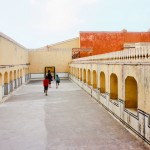
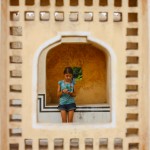
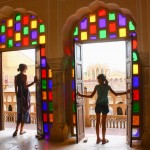
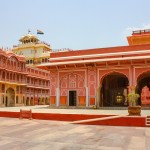
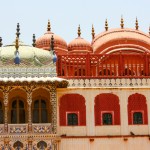
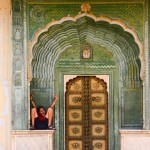
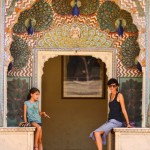
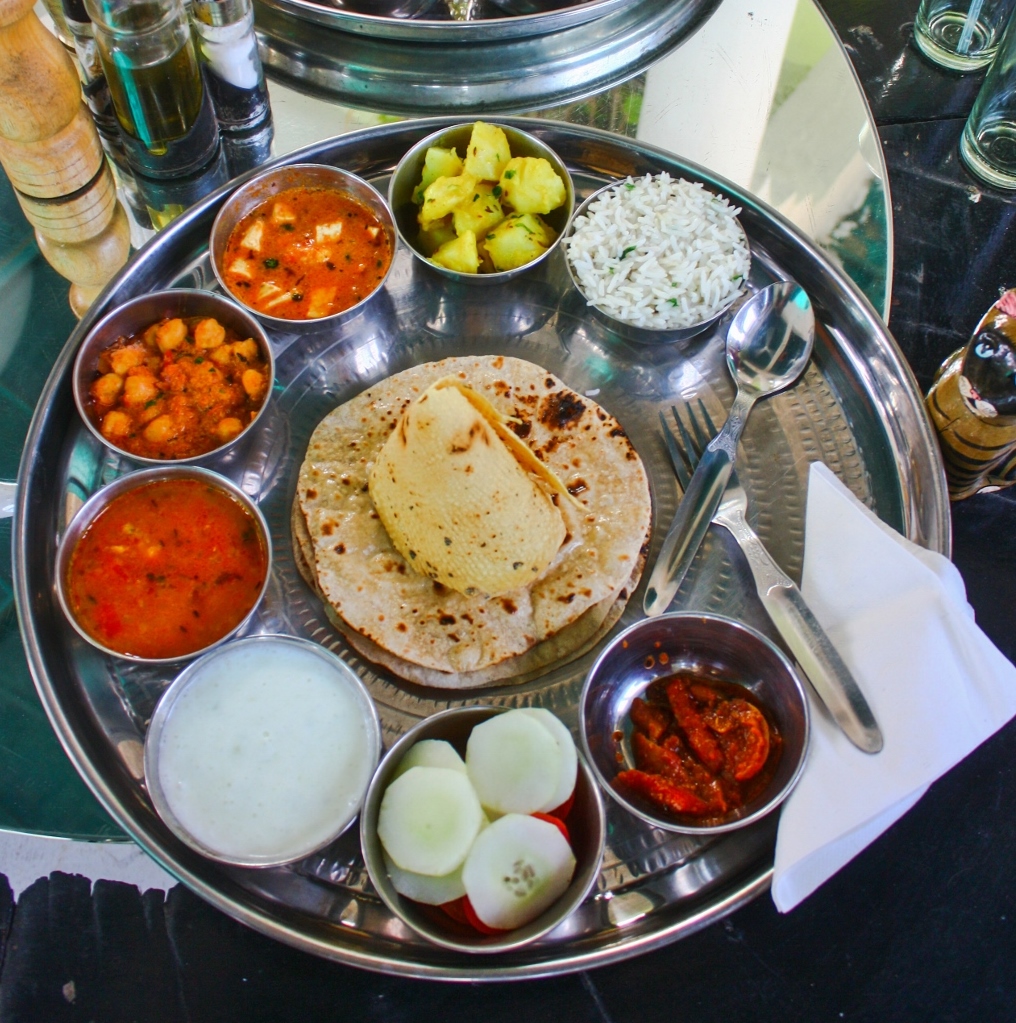
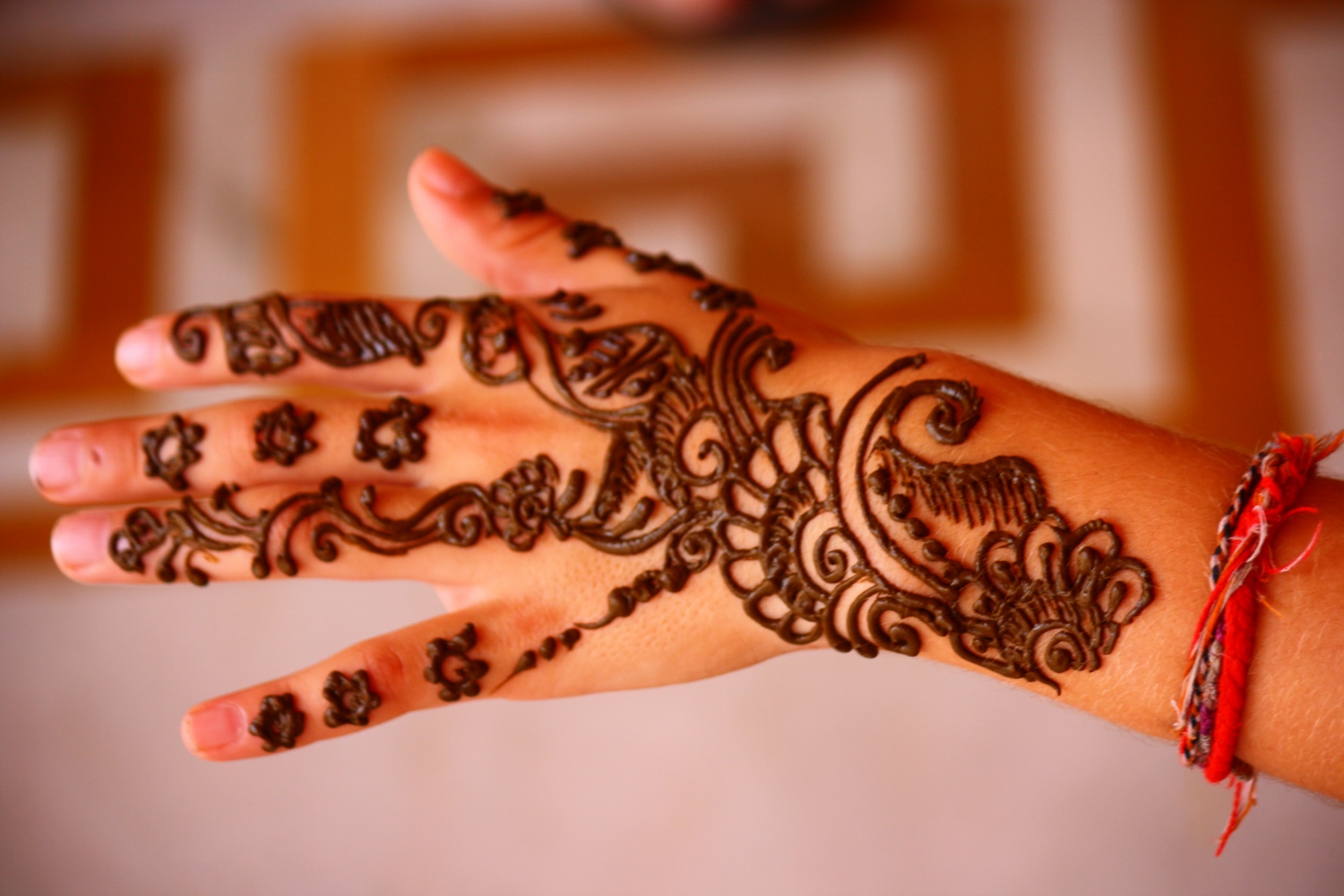
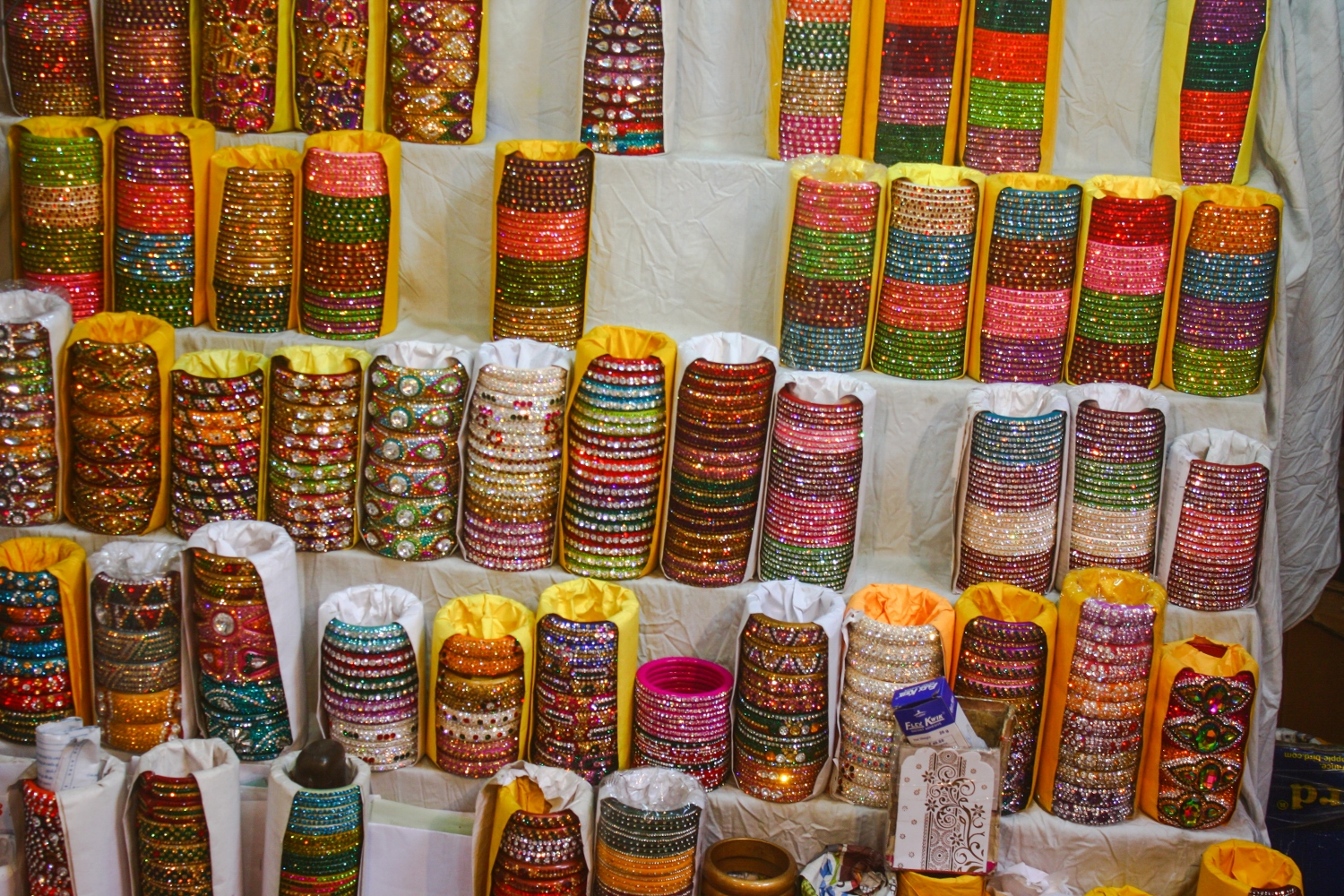
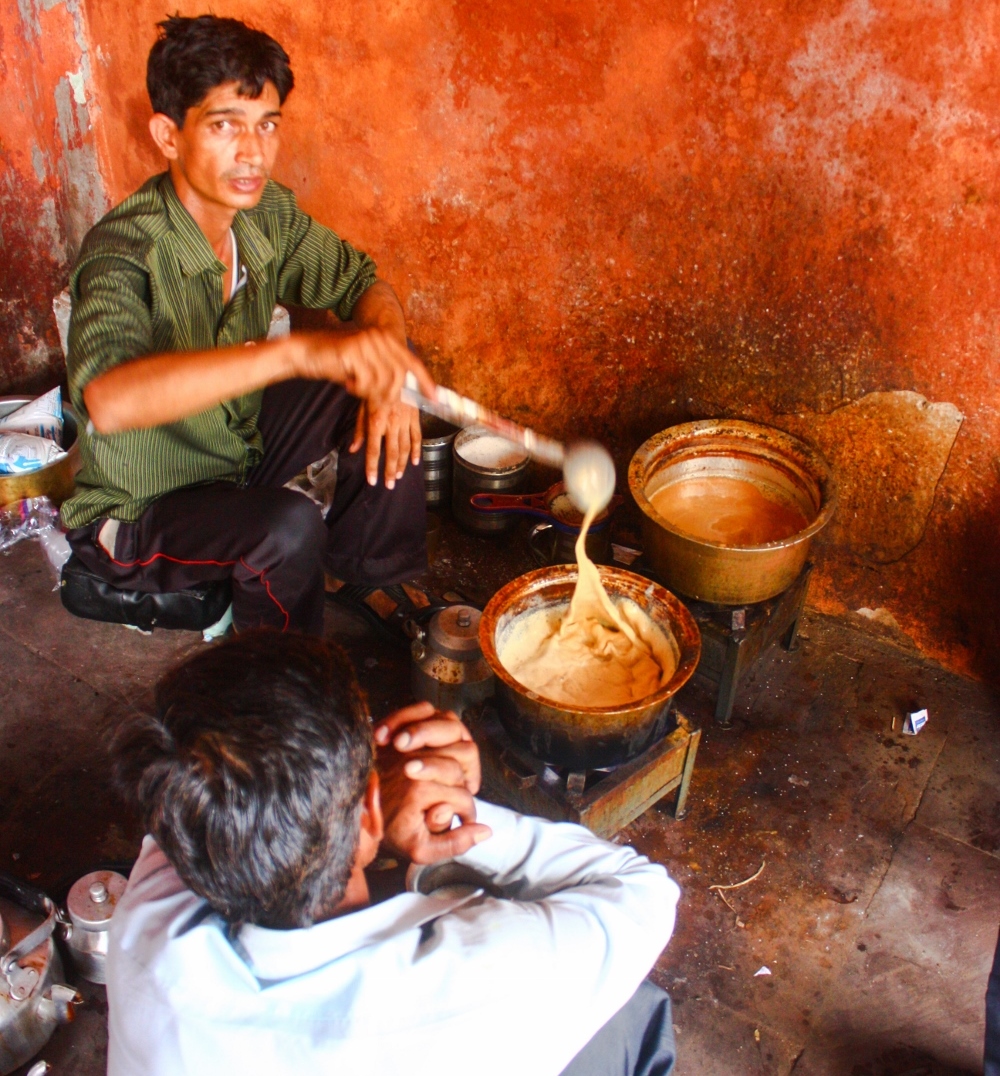
So glad to read such a detailed update. I will continue to be jeaWous ( 🙂 ) of your cuisine but grateful for my personal space. Keep writing-it’s fantastic! 🙂 -Lindsey (windsey)
Windsey, true, India might not be your cup of tea:) Too touch-y feel-y…but so wonderful. Wove to you my friend.
So what was the explosion? Don’t keep us guessing! Glad to hear some of the culture shock has worn off. Eat some thalis for me.
Ha! The explosion is still a mystery. I never investigated. About the thalis – I am afraid that I am indulging them too much. My tummy is back 🙁 I will dedicate today’s thali to you my sweet friend. To hell with trying to stay trim. Love to the family.
So how do they prepare chai?
Dafi, check out the blogpost from Boryan called: “Chai Masala by Johny”. He gives out the chai secret there. I like it with no sugar, but the kids like it sweet:)
My experience was that it helped a lot to where Punjabi dress or some kind of long pant and head cover. Maybe even Raina should not wear shorts. Indians as I am sure you see, really stare at women with exposed legs.
I was wondering how t you would react to India and am enjoying your blog and wonderful pictures. Are you going to South India? I never got there but apparently it has amazing temples and is quite different (no Muslims took over historically). Stay well.
Nicole, you are right. The clothes are a big part of the staring problem, but I think people are just super curious here. We were never stared at as much in any other country. Shorts are not ok, tank tops are not ok, even for Raina. I was given a make over by women on the street: they covered my shoulders with a scarf and my knees with my pants when sitting:) The problem is that the heat is unbearable under a scarf…I got so tired of the stares that I did try wearing a shalwar kameez outfit but people still stare! What is really strange though is how much attention Boryan is getting everywhere! People hug him, shake his hand, ruffle his hair, call him “My best Friend” – all the time! Raina is somewhat neglected. It must be the high standing boys have in the Indian culture…We are going South after Kashmir and I heard that it is another world. We also decided to visit Shri Lanka – I am curious how the two cultures compare. Cheers!